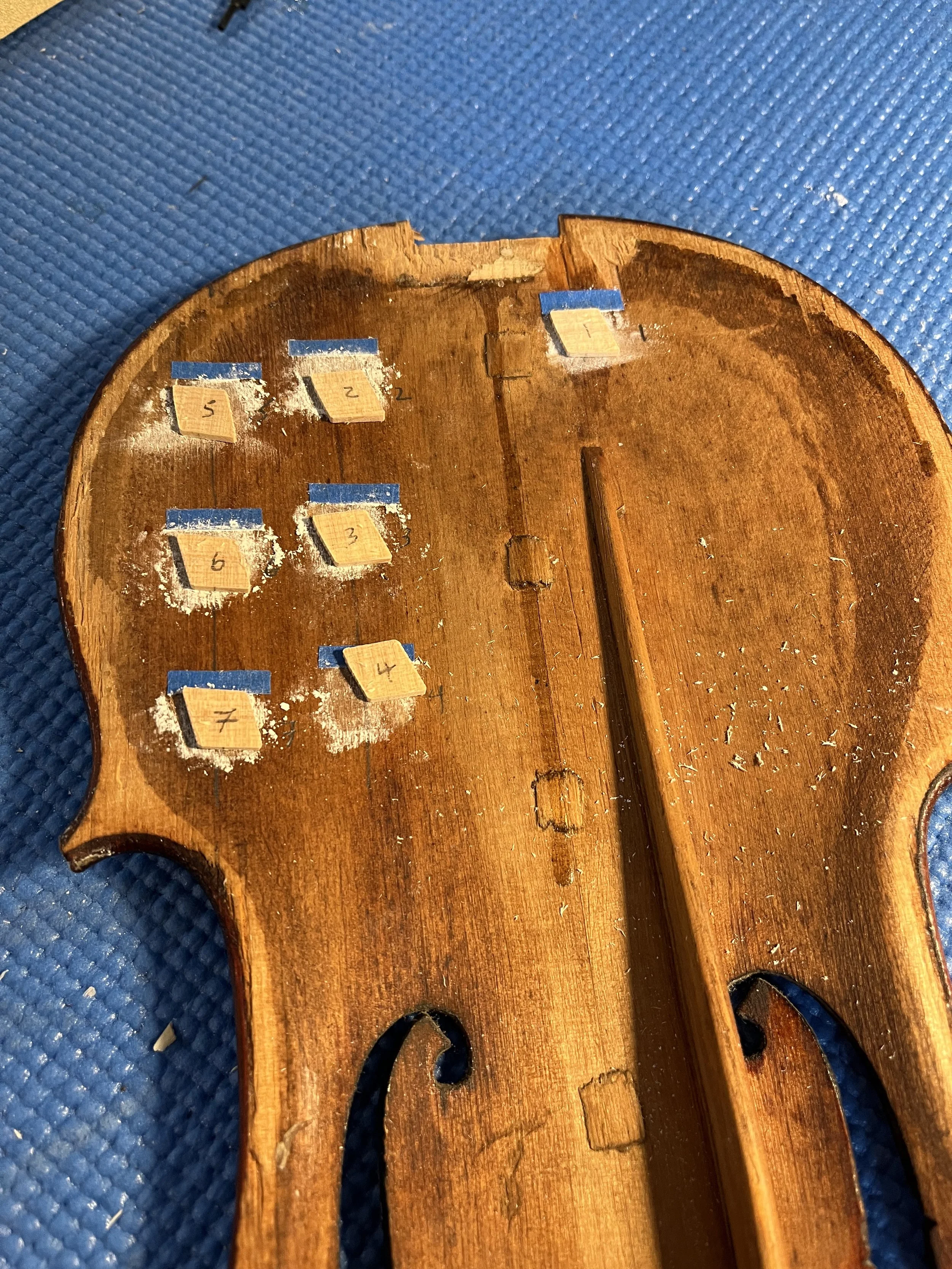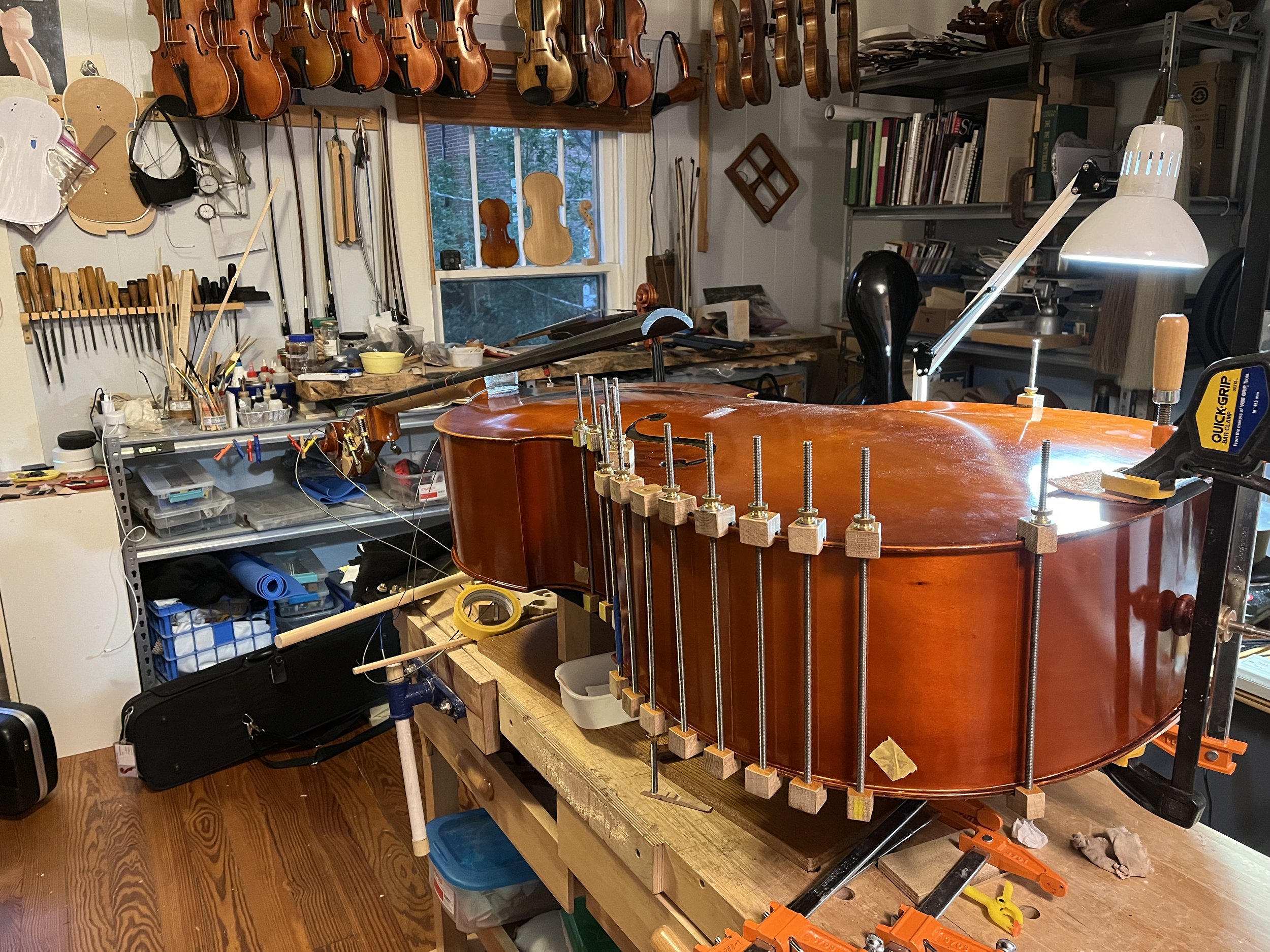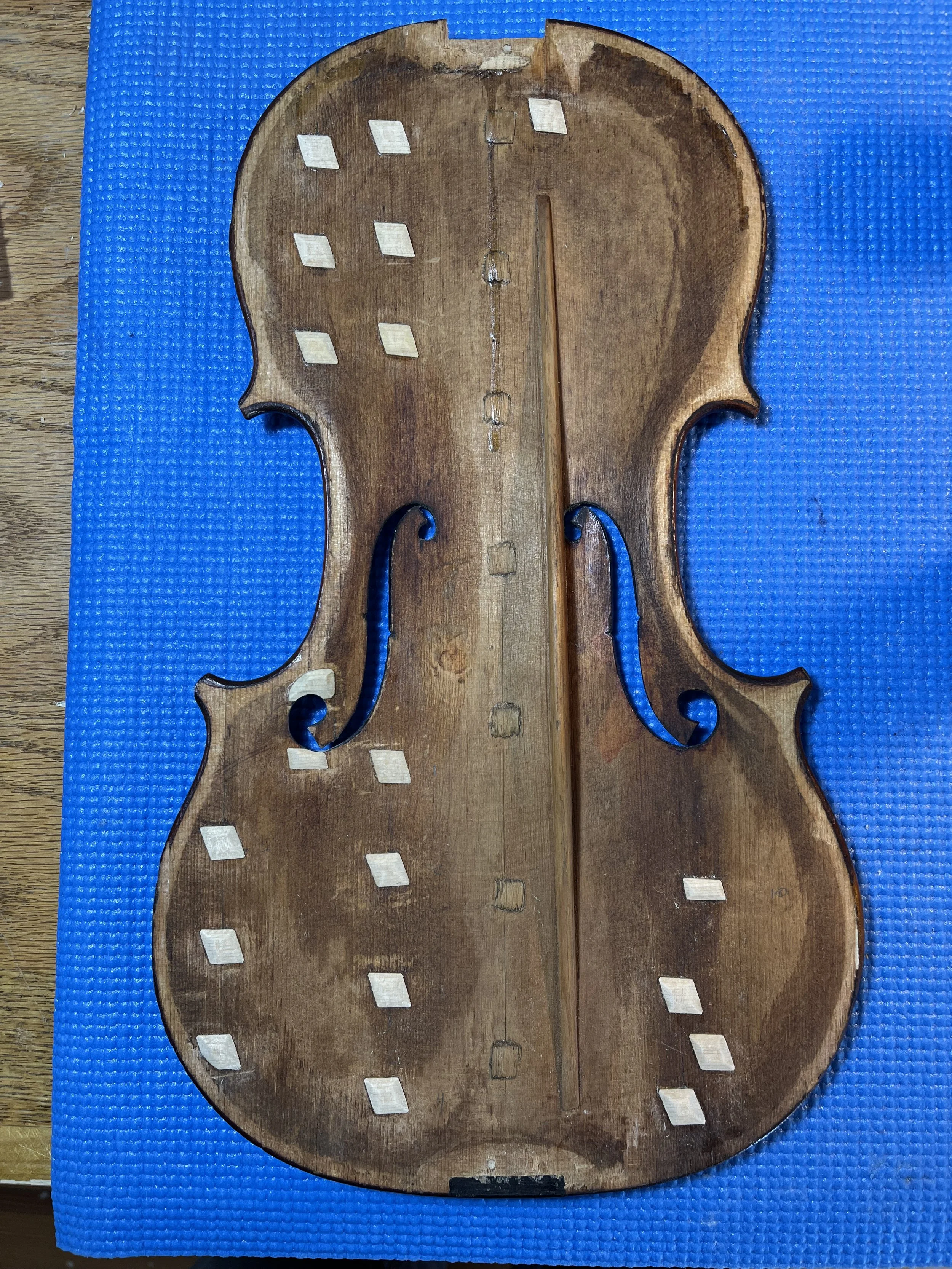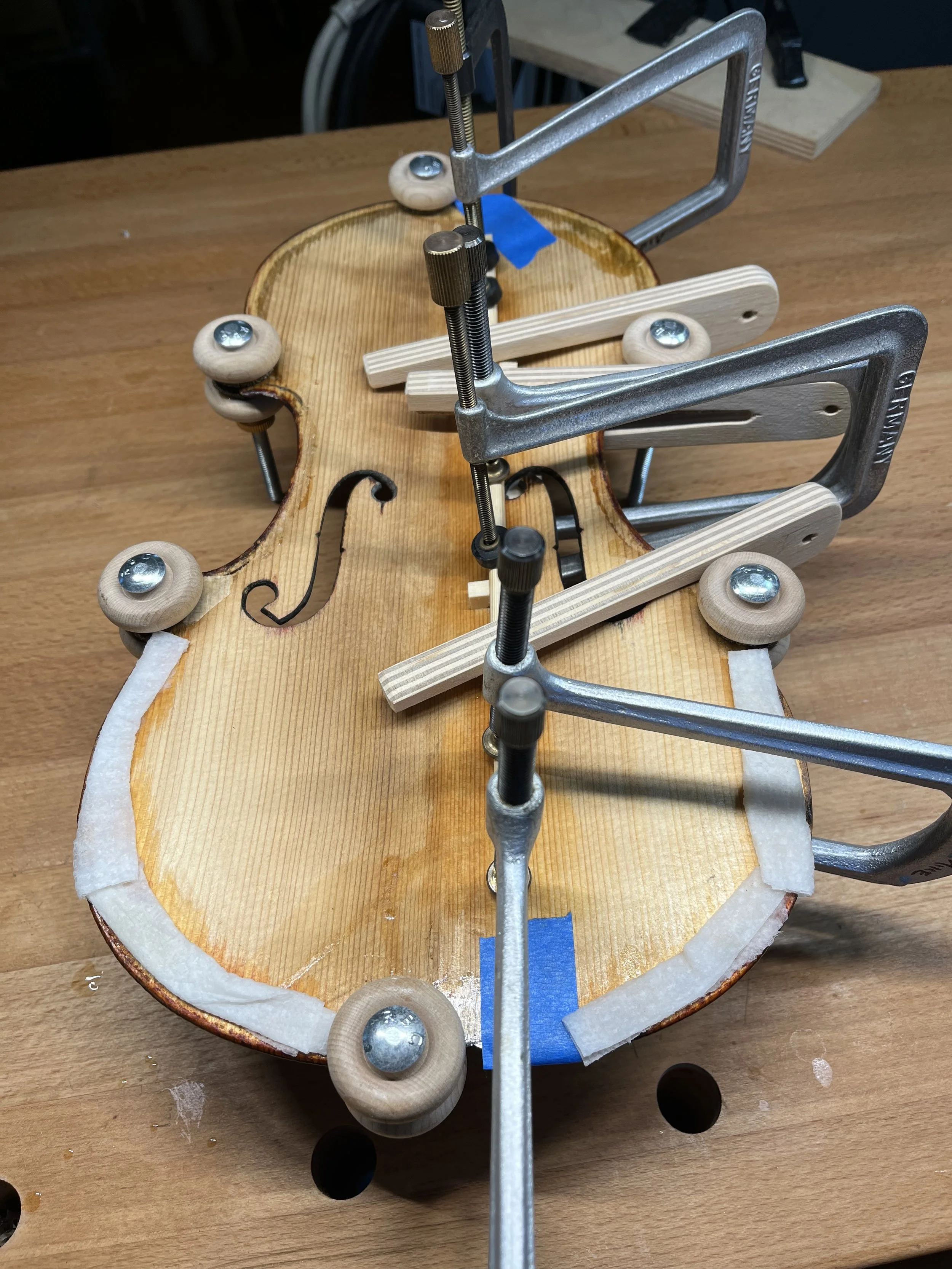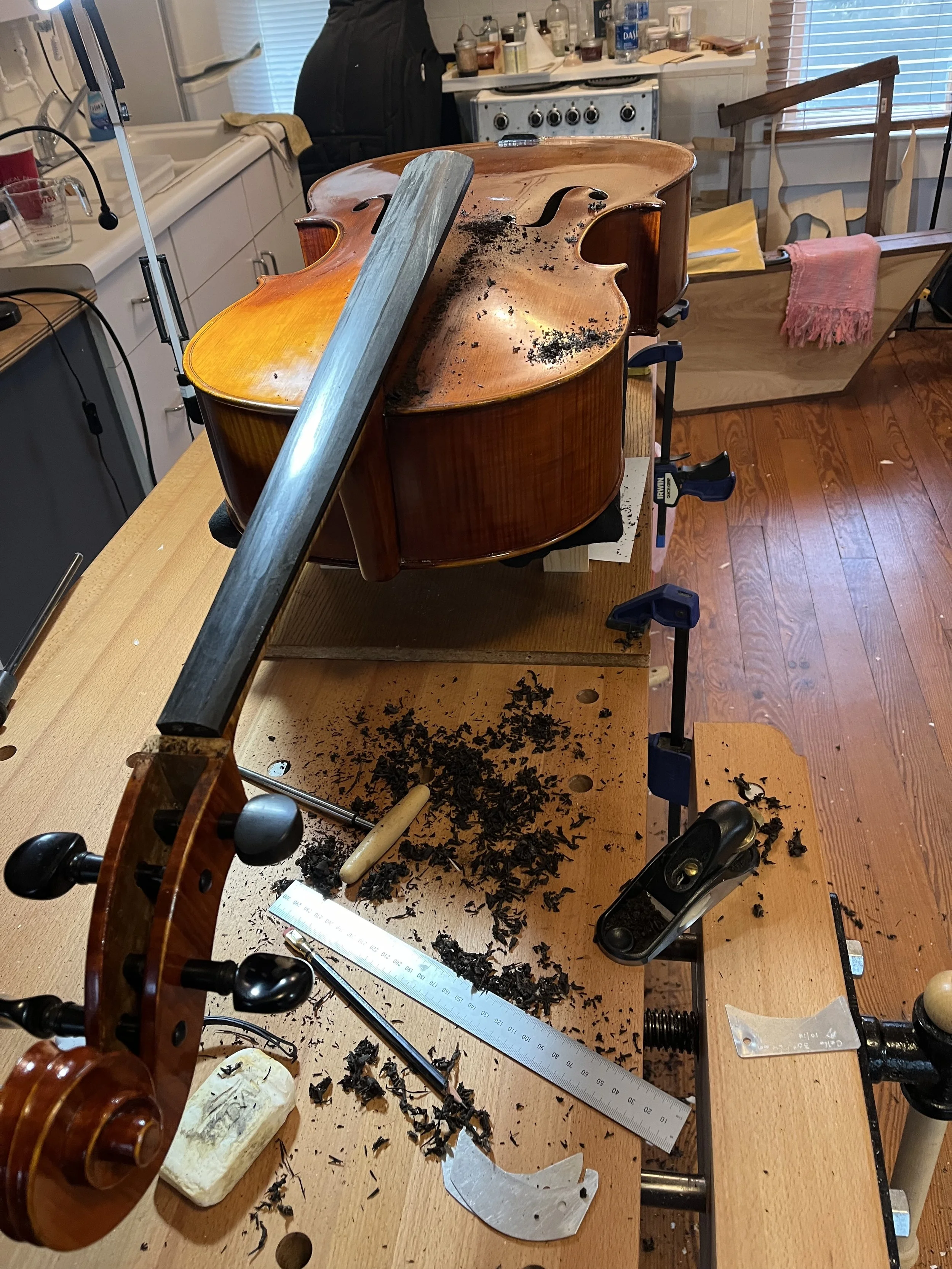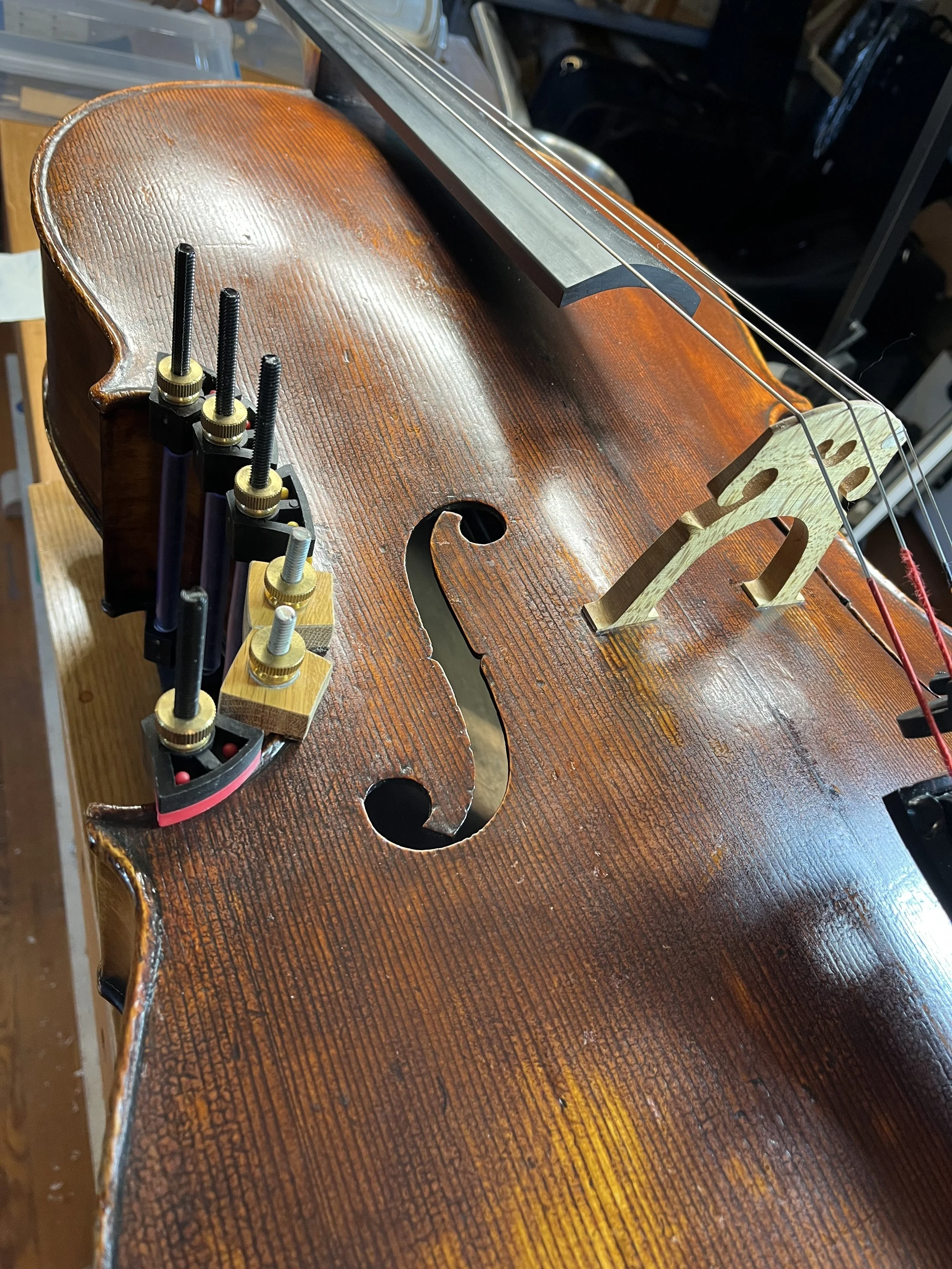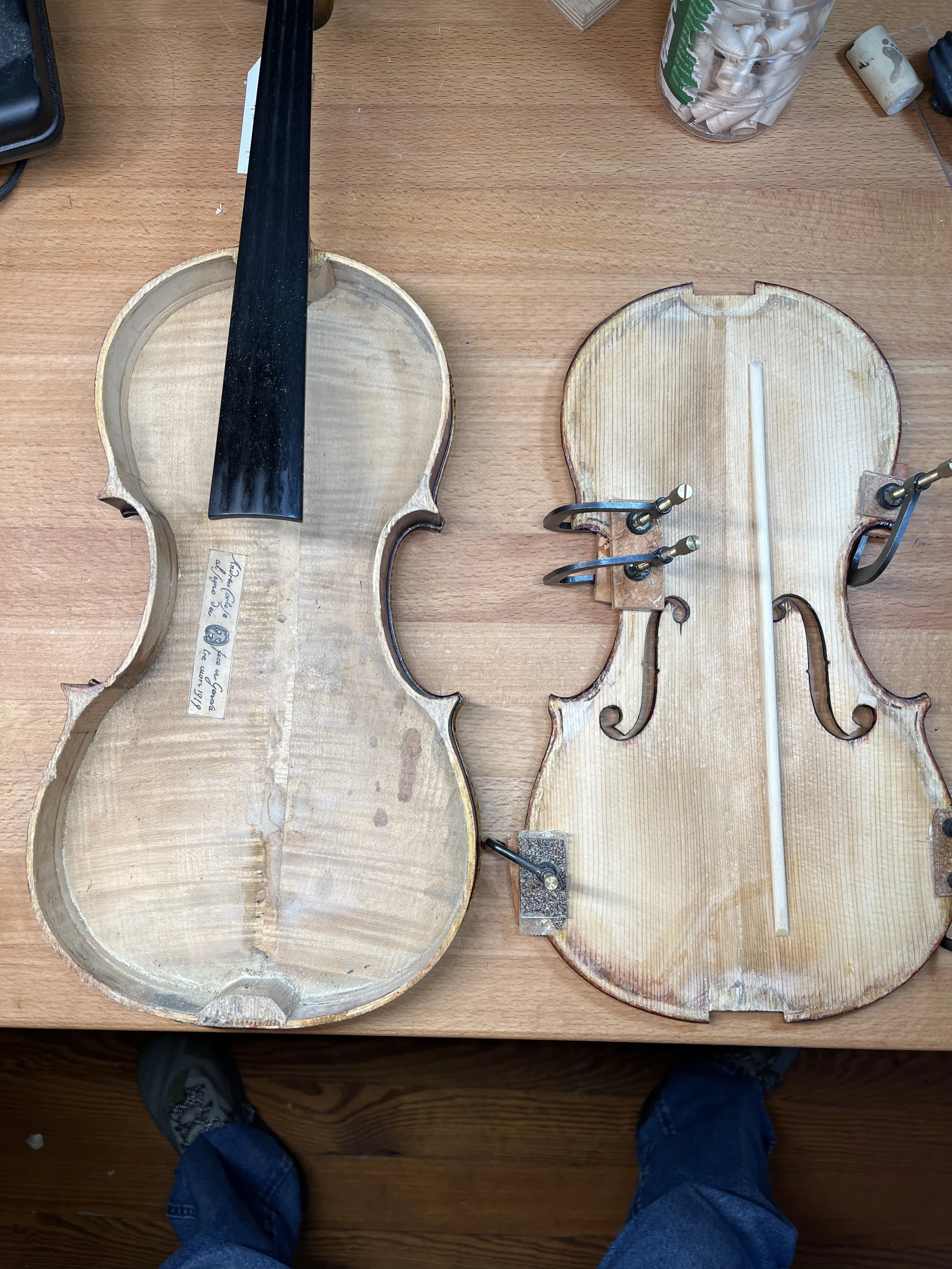Repairs and Maintenance
Mike trained with Alex Wilson and Sanghoon Lee at the Violin Making School of America, the Peter Prior and Sons shop in Salt Lake City, through joint work with Jeff Robinson in Flagstaff, through internships with Triangle Strings in Raleigh, NC, and through continual learning about the details of great setup.
Bring your bridge, sound post, open seams, sticking pegs, and other routine issues to Mike for prompt, excellent resolution.
Bring your bows for rehairing.
Mike prefers not to tackle major restoration projects, leaving this work to experts.
Your best sound depends on a great setup. Come have Mike check your bridge, nut and the many other details of your setup.
